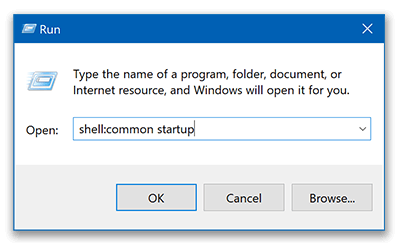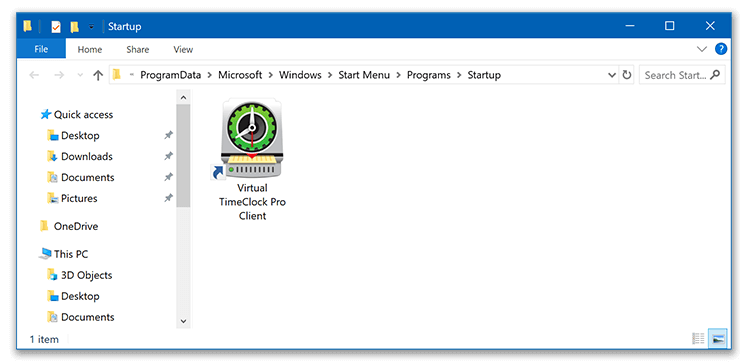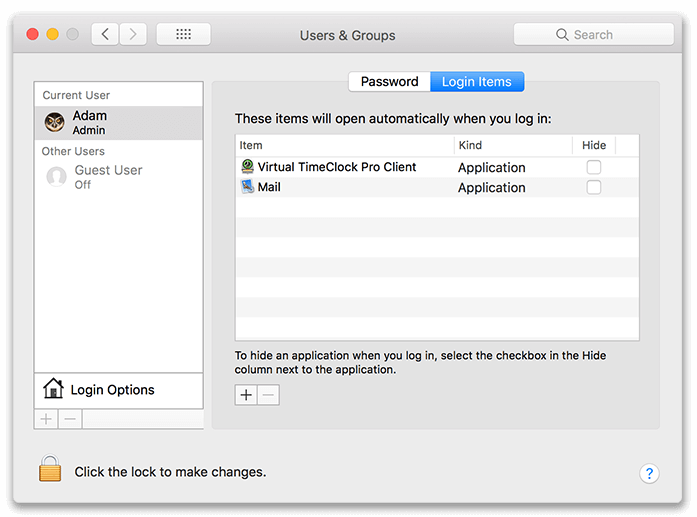Virtual TimeClock Support Blog
Automatically Open Virtual TimeClock on Startup
Many users find it helpful to have Virtual TimeClock automatically launch itself when a user turns on their computer. This is especially useful for reminding users to clock in for the day. In this blog we'll cover how to add Virtual TimeClock to the startup automatically in both Windows and macOS.
Adding Programs to Windows Startup
In Windows 7 and earlier versions of Windows, there is an easily accessible Startup folder located at Start menu > All Programs > Startup. Drag a shortcut of your Virtual TimeClock app to this startup folder to add it to the startup programs.
In Windows 8, 8.1 and 10, the Startup folder is no longer as readily available, but it's still fairly simple to add a program to the startup tasks. Follow these steps:
- Press Windows Key + R to open the Run dialog box.
- Type "shell:common startup" and press OK.

- Copy and paste a shortcut of your Virtual TimeClock program into this folder.

Adding Programs to macOS Startup
Follow these steps to add a program to your Mac computer startup:
- Select System Preferences from the Apple menu.
- Choose Users & Groups and select the user.
- Under the Login Items tab, choose the + button.
- Select your Virtual TimeClock program from your Applications list.

Once you have added Virtual TimeClock to the start up programs, the program will launch automatically when you login to your computer. This is a great way to remind users to clock in when they arrive for work.